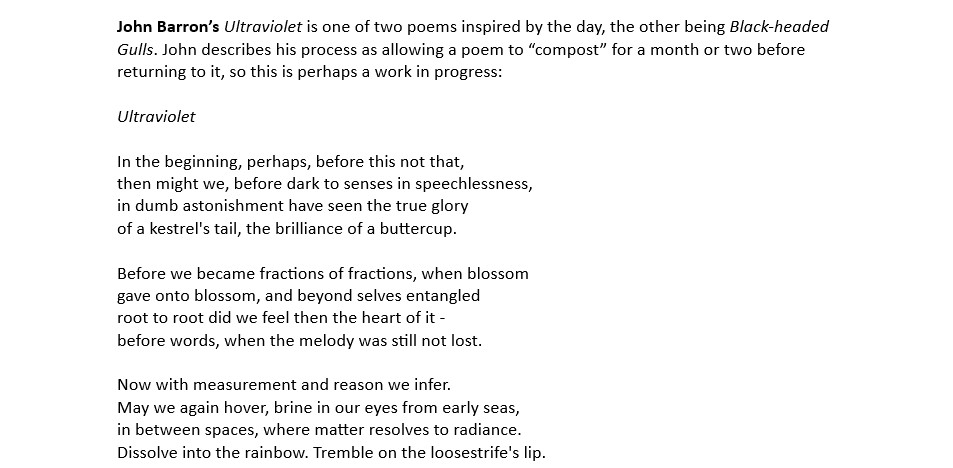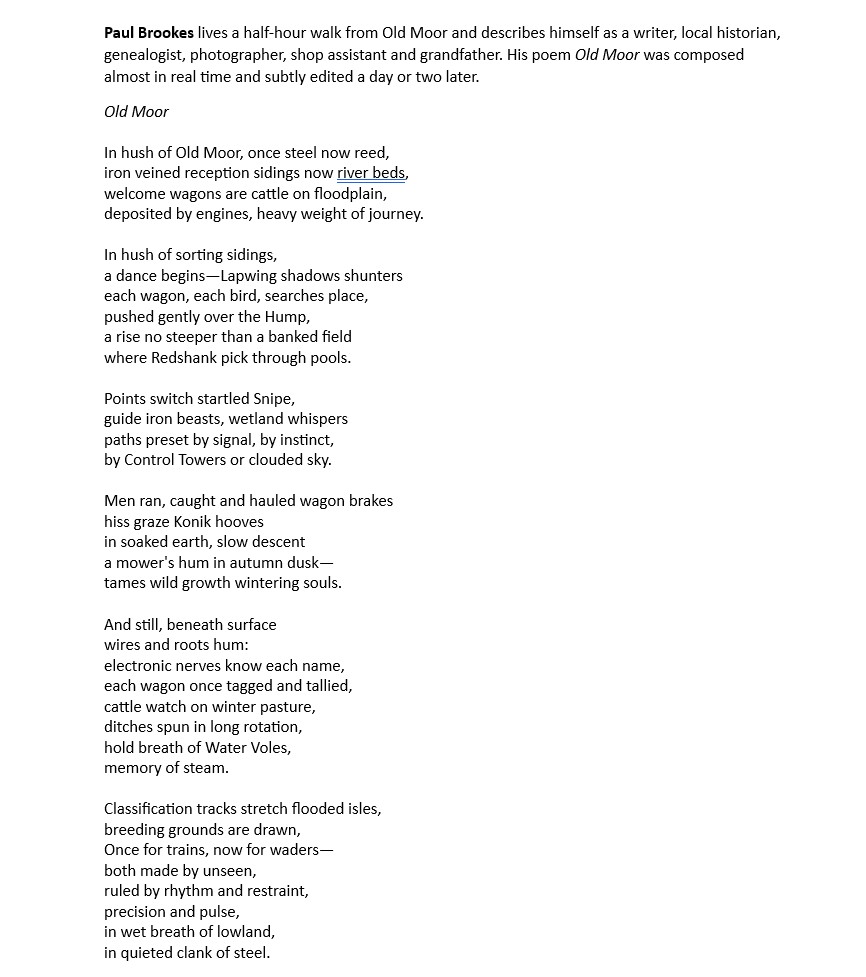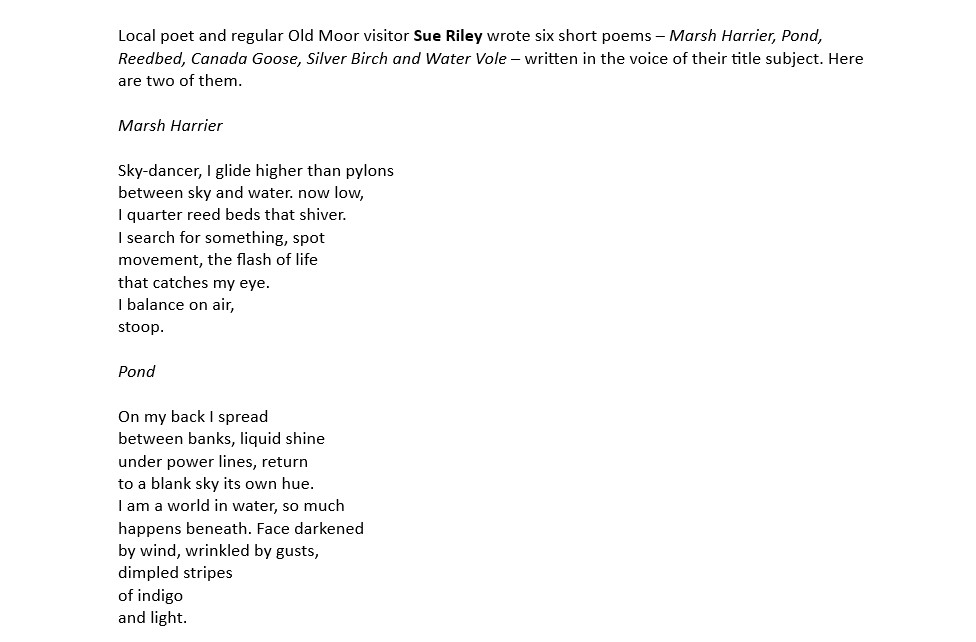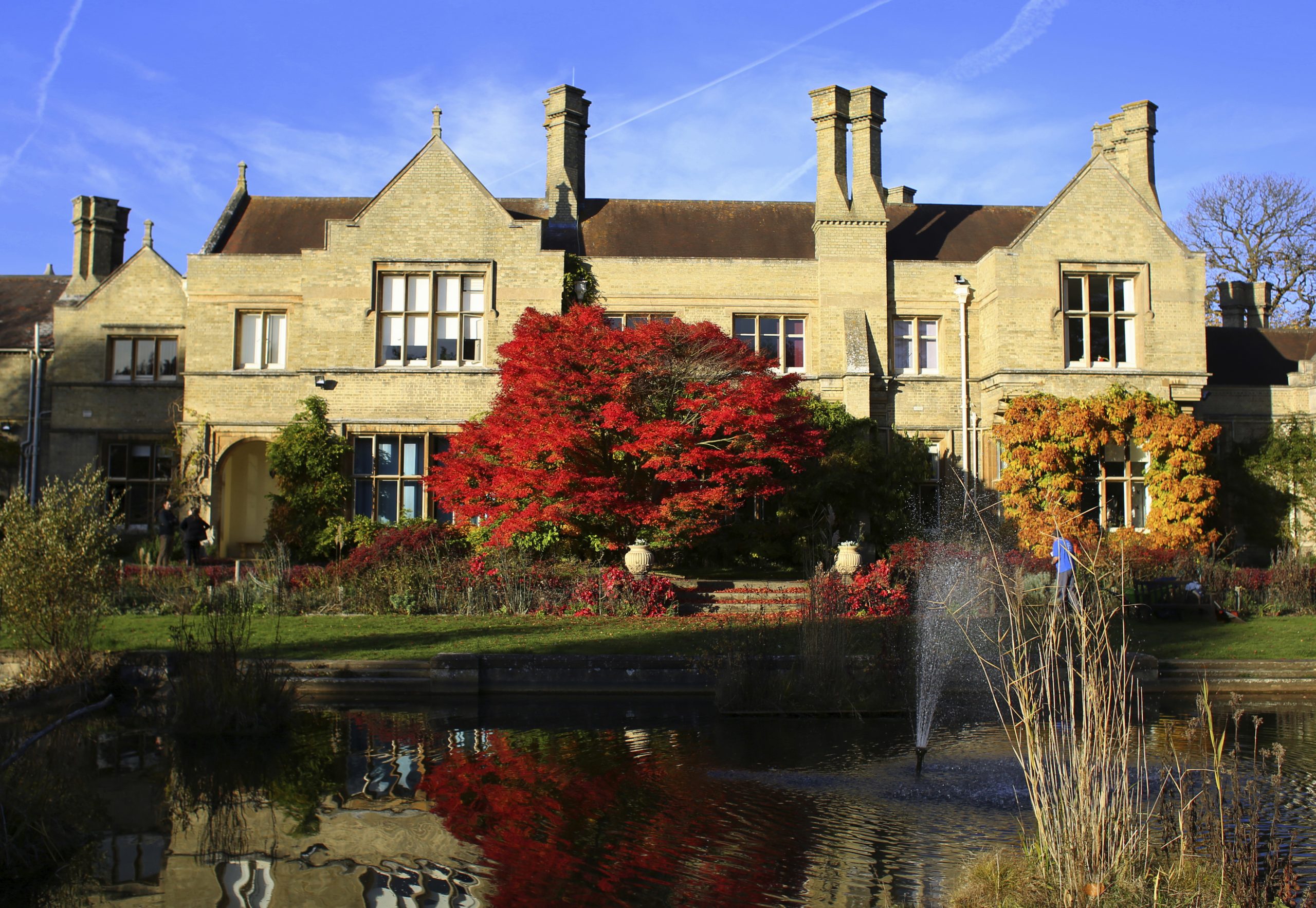Write of Spring
A post-industrial landscape rich in wildlife is the inspiration for new writings, and new ideas about the nature of nature.
As ten of us gathered for the second Writing in Nature workshop of the year at RSPB Old Moor, the challenge soon became clear: was it going to be just too easy? The weather was good, the wildlife abundant. Cowslips, gorse and blackthorn were in full flower, birds were in full song or on full display.
One advantage of holding a writing workshop at Old Moor, in the Dearne Valley of South Yorkshire, is that it is a profoundly human landscape, shaped by its industrial past. The birdsong is set against the thrumming drone of the busy A6195; the birches and alders may tower over the reeds, but pylons tower over them. A disadvantage, surely? Well, too much nature writing defaults to the idyllic in spring, whereas here, any temptation to depict some primordial Eden evaporates, and different ways of seeing, hearing and describing nature – if we can even call it that – are called for.
Starting with a short warm-up exercise, we spent a few minutes on a track through the reserve that was bounded on one side by a maturing hedge and on the other by open marshland. We were compiling a list of newly-coined kennings. A kenning is a word-play, a poetic device that dates back to the oldest English and Scandinavian literature. One of the best known comes from Beowulf, in which the ocean is called the whale-road (hron-rad in Old Norse versions, hwælweg in Old English). We are still creating kennings, such as the 1880s coining skyscraper.
After a quick share of new inventions like water-ribs (ripples) and wind-combs (reeds), we got down to the first writing challenge. One of the most compelling themes in spring is change: growth, greening, flowering, warming, lightening, renewal, migration. Could we explore change while resisting the obvious spring clichés?
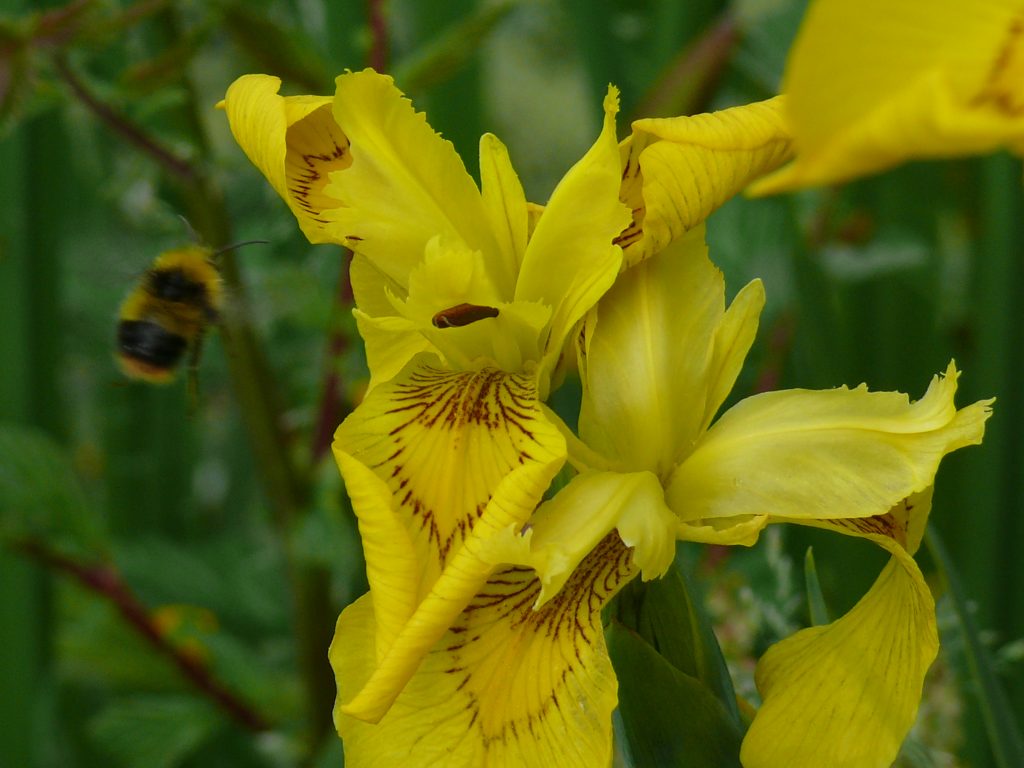
Over lunch I gave a short presentation on reimagining the sounds and colours of spring as other species might perceive them, ahead of our afternoon challenge. Most bright flowers are there to attract pollinating insects. Yet the insects themselves see bright colours in a haze, and need another colour, one that we cannot see, to illuminate the pathways to their target. We cannot even conceive of there being another colour out there, and we have to get our heads around the idea that ultraviolet is not as it is usually depicted – very dark violet or black, it is a ‘new’ colour unseen by any human.
7 seconds of skylark song at normal speed, followed by the same recording slowed down 8 times.
I played the song of a skylark, first at full speed, then slowed down eight times. At one-eighth speed, we heard melodic and rhythmic detail at the scale of human music, at a tempo we can follow. Can skylarks hear in 8x higher definition than us? It seems likely – why else would they sing in such a complex and intricate way?
The workshop attracted a wide range of attendees, some of whom were experienced writers, others were keen naturalists with less writing experience, some combined both, and some were new to both – a perfect mix. In the following days, three shared their work with me to present here. Many thanks to John Barron, Paul Brookes and Sue Riley for their brilliant poems, to Issy Bruning for organising the event as well as taking part, and to the other attendees Abby, Alex, Elisa, Flora and Keith for contributing their inspired writings on the day.
Four poems inspired by spring at Old Moor
